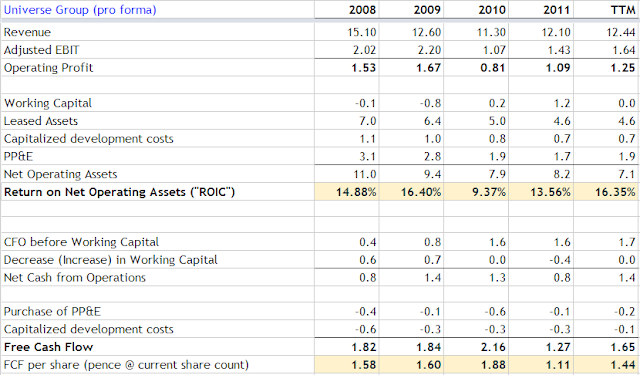Bill looks at my labeled box on
the board and says, “Walton broke the conventional wisdom. He put big stores in
small towns. Wal-Mart had everyday low prices. Wal-Mart ran a computerized
warehousing and trucking system to manage the movement of stock into stores. It
was nonunion. It had low administrative expenses.”
It takes about thirty minutes
for six other participants to flesh out this list. They are willing to throw
anything into the bin, and I don’t stop them. I prod for detail and context,
asking, “How big were the stores?” “How small were the towns?” “How did the
computerized logistics system work?” And “What did Wal-Mart do to keep its
administrative expenses so low?”
As the responses flood in,
three diagrams take shape on the whiteboard. A circle appears, representing a
small town of ten thousand persons. A large box drawn in the circle represents
a forty-five-thousand-square-foot Wal-Mart store. A second diagram of the
logistical system emerges. A square box represents a regional distribution
center. From the box, a line marks the path of a truck, swooping out to pass by
some of the 150 stores served by the distribution center. On the return path,
the line passes vendors, picking up pallets of goods. The line plunges back to
the square, where an “X” denotes cross-docking to an outgoing truck. Lines of a
different color depict the data flows, from the store to a central computer,
and then out to vendors and the distribution center. Finally, as we discuss the
management system, I draw the paths of the regional managers as they follow a
weekly circuit: Fly out from Bentonville, Arkansas, on Monday, visit stores,
pick up and distribute information, and return to Bentonville on Thursday for
group meetings on Friday and Saturday. The last two diagrams are eerily
similar—both revealing the hub structure of efficient distribution.
The discussion slows. We have
gotten most of the facts out. I look around the room, trying to include
them all, and say, “If the policies you have listed are the reasons for
Wal-Mart’s success, and if this case was published—let’s see—in 1986, then why
was the company able to run rampant over Kmart for the next decade? Wasn’t the
formula obvious? Where was the competition?”
Wal-Mart’s advantage must stem
from something that competitors cannot easily copy, or do not copy because of
inertia and incompetence. In the case of Wal-Mart, the principal competitive
failure was Kmart.… After some moments I ask a more pointed question: “Both
Wal-Mart and Kmart began to install bar-code scanners at cash registers in the early
1980s. Why did Wal-Mart seem to benefit from this more than Kmart?”
I turn back the whiteboard and
stand right next to the boxed principle: “A full-line discount store needs a
population base of at least 100,000.” I repeat his phrase, “The Wal-Mart store
needs to be part of the network,” while drawing a circle around the word
“store.” Then I wait.
With luck, someone will get it.
As one student tries to articulate the discovery, others get it, and I sense a
small avalanche of “ahas,” like a pot of corn kernels suddenly popping. It
isn’t the store; it is the network of 150 stores. And the data
flows and the management flows and a distribution hub. The network replaced the
store. A regional network of 150 stores serves a population of millions! Walton
didn’t break the conventional wisdom; he broke the old definition of a store.
When you understand that Walton
redefined the notion of “store,” your view of how Wal-Mart’s policies fit
together undergoes a subtle shift. You begin to see the interdependencies among
location decisions. Store locations express the economics of the network, not
just the pull of demand. You also see the balance of power at Wal-Mart. The
individual store has little negotiating power—its options are limited. Most
crucially, the network, not the store, became Wal-Mart’s basic unit of
management.
In making an integrated network
into the operating unit of the company, instead of the individual store, Walton
broke with an even deeper conventional wisdom of his era: the doctrine of
decentralization, that each kettle should sit on its own bottom. Kmart had long
adhered to this doctrine, giving each store manager authority to choose product
lines, pick vendors, and set prices. After all, we are told that
decentralization is a good thing. But the oft-forgotten cost of
decentralization is lost coordination across units. Stores that do not choose
the same vendors or negotiate the same terms cannot benefit from an integrated
network of data and transport. Stores that do not share detailed information
about what works and what does not cannot benefit from one another’s learning.
If your competitors also
operate this kind of decentralized system, little may be lost. But once
Walton’s insights made the decentralized structure a disadvantage, Kmart had a
severe problem. A large organization may balk at adopting a new technique, but
such change is manageable. But breaking with doctrine—with one’s basic
philosophy—is rare absent a near-death experience.
The hidden power of Wal-Mart’s
strategy came from a shift in perspective. Lacking that perspective, Kmart saw
Wal-Mart like Goliath saw David—smaller and less experienced in the big
leagues. But Wal-Mart’s advantages were not inherent in its history or size.
They grew out of a subtle shift in how to think about discount retailing.
Tradition saw discounting as tied to urban densities, whereas Sam Walton
saw a way to build efficiency by embedding each store in a network of computing
and logistics. Today we call this supply-chain management, but in 1984 it was
as an unexpected shift in viewpoint. And it had the impact of David’s slung
stone.”



